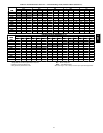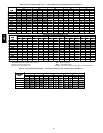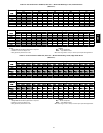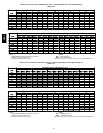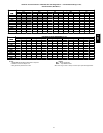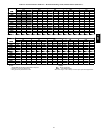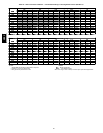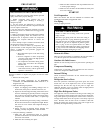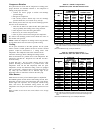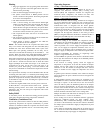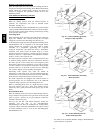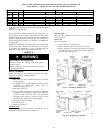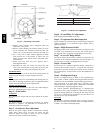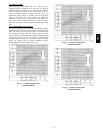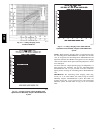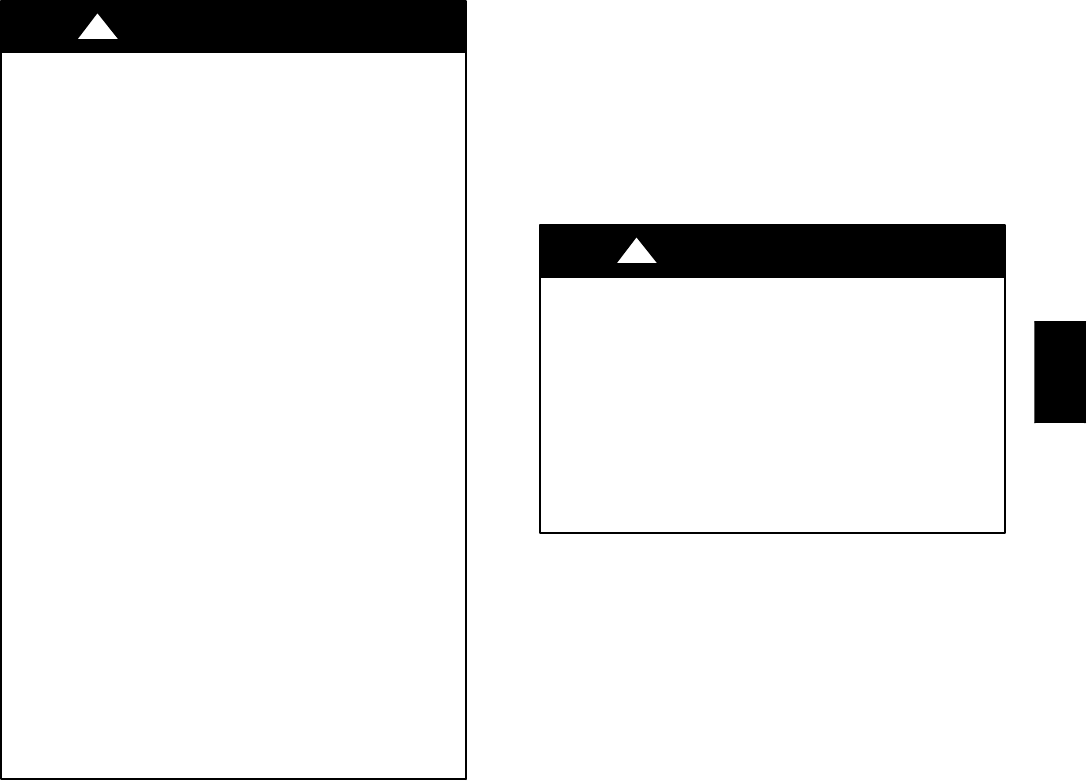
41
PRE-START-UP
FIRE, EXPLOSION, ELECTRICAL SHOCK HAZARD
Failure to follow this warning could result in personal
injury, death and/or property damage:
1. Follow recognized safety practices and wear
protective goggles when checking or servicing a
refrigerant system.
2. Do not operate the compressor or provide any
electric power to the unit unless the compressor terminal
cover is in place and secured.
3. Do not remove the compressor terminal cover until
all electrical sources are disconnected and tagged with
lockout tags.
4. Relieve all pressure from the system before touching
or disturbing anything inside the terminal box if a
refrigerant leak is suspected around the compressor
terminals. Use accepted methods to recover the
refrigerant.
5. Never attempt to repair a soldered connection while
the refrigerantsystem is under pressure.
6. Do not use a torch to remove any component. The
system contains oil and refrigerant under pressure. To
remove a component, wear protective goggles and
proceed as follows:
a. Shut off electrical power to the unit and tag
disconnect.
b. Recover refrigerant to relieve all pressure
from the system using both high-pressure
and low-pressure ports.
c. Cut component connection tubing with a
tubing cutter, and remove the component
from the unit.
d. Carefully unsweat the remaining tubing
stubs when necessary. Oil can ignite when
exposed to a torch flame.
!
WARNING
Proceed as follows to inspect and prepare the unit for initial
start-up:
1. Remove all access panels.
2. Read and follow instructions on all WARNING,
CAUTION, and INFORMATION labels attached to, or
shipped with, unit.
3. Make the following inspections:
a. Inspect for shipping and handling damages such as
broken lines, loose parts, or disconnected wires, etc.
b. Inspectforoilatallrefrigeranttubingconnectionsandon
unit base. Detecting oil generally indicates a refrigerant
leak. Leak-test all refrigerant tubing connections using
electronic leak detector, halide torch, or liquid-soap
solution.
c. Inspect all field-wiring and factory-wiring connections.
Besurethatconnectionsarecompletedandtight.Besure
that wires are not in contact with refrigerant tubing or
sharp edges.
d. Inspect coil fins. If damaged during shipping and
handling, carefully straighten fins with a fin comb.
4. Verify the following conditions:
a. Make sure that condenser-fan blade are correctly
positionedinfanorifice.SeeCondenser-FanAdjustment
section for more details.
b. Make sure that air filter(s) is in place.
c. Make sure that condensate drain trap isfilled with water
to ensure proper drainage.
d. Make sure that all tools and miscellaneous loose parts
have been removed.
START-UP
Unit Preparation
Make sure that the unit has been installed in accordance with
installation instructions and applicable codes.
Gas Piping
Check gas piping for leaks.
ELECTRICAL SHOCK HAZARD
Failure to follow this warning could cause personal
injury or death.
Disconnect gas piping from unit when leak testing at
pressure greater than
1
/
2
psig. Pressures greater than
1
/
2
psig will cause gas valve damage resulting in hazardous
condition. If gas valve is subjected to pressure greater
than
1
/
2
psig, it must be replaced before use. When
pressure testing field-supplied gas piping at pressures of
1
/
2
psig or less, a unit connected to such piping must be
isolated by manually closing the gas valve.
!
WARNING
Return--Air Filters
Make sure the correct filters are installed i n the unit (See Table 1
or 2). Do not operate the unit without return-air filters.
Outdoor--Air Inlet Screens
Outdoor-air inlet screen(s) must be in place before operating the
unit.
Compressor Moun ting
Compressors are internally spring mounted. Do not loosen or
remove the compressor holddown bolts.
Internal Wiring
Check all electrical connections in unit control boxes; tighten
them as required.
Refrigerant Service Ports
Each unit system has 4 Schrader--type service ports: one on the
suction line, one on the liquid line, and 2 on the compressor
discharge line. Be sure that caps on the ports are tight. Two
additional Schrader valves are located under the high--pressure
and low--pressure switches, respectively.
High Flow Refrigerant Valves
Two high flow valves are located on the hot gas tube coming out
of thecompressor and the suction tube going into the compressor.
Large black plastic caps identify these valves. These valves have
O--rings inside which screw the cap onto a brass body to prevent
leaks. No field access to these valves is available at this time.
Ensure the plastic caps remain on the valves and are tight or the
possibility of refrigerant leakage could occur .
581B,C



